Publishing Aircraft Maintenance Errors

Note: This is a fictitious story based on numerous actual events intended to illustrate the serious article that follows.
Unveiling Safety: The Picture That Saved Lives
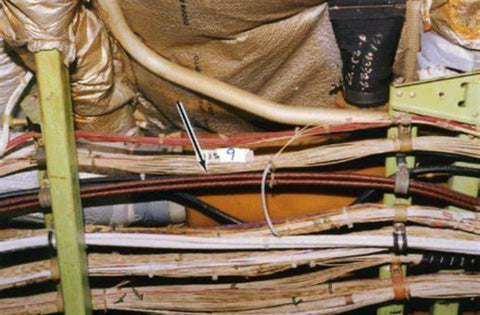
In the bustling aircraft hangar, where the scent of fuel mingled with the hum of machinery, precision was paramount. Every nut tightened, every wire checked—each step was crucial to ensuring the safety of countless passengers who soared through the skies. And at the heart of this operation was Thomas Reed, a seasoned aircraft mechanic whose dedication to perfection was unwavering.
[Please visit Challenge Coin Nation. We are a veteran founded company and are honored to be able to continue serving our brothers and sisters in arms all over the world. We sell many different military themed items, but challenge coins are our specialty.]
It was a typical day for Thomas until he stumbled upon something that sent a chill down his spine. Hidden amidst the intricate web of wires in the belly of a jet, he discovered an error—a tiny oversight with monumental consequences. His trained eye caught the anomaly—a misrouted wire, innocuous at first glance but potentially catastrophic in the skies.
His heart raced as he imagined the possible outcomes: a mid-air malfunction, a forced emergency landing, lives hanging in the balance. He knew he had to act swiftly, but he also realized the gravity of the situation. This wasn't just any error; it was a flaw that could have slipped through the cracks, unseen and deadly.

Thomas wrestled with the dilemma. Should he rectify the mistake discreetly, ensuring the aircraft's safety without causing alarm? Or should he bring attention to it, risking scrutiny and backlash against a fellow mechanic who had made the error, but potentially preventing a future tragedy?
In the end, his commitment to safety won out over fear. With a steady hand, he captured an image of the error—a damning snapshot of negligence that could have cost lives. He knew that this single picture held the power to effect a change, to bolster a culture of accountability within the organization.
But what followed was beyond his expectations. As he circulated the image among his colleagues and superiors, the reaction was immediate. Shock mingled with urgency as the magnitude of the error became clear. Meetings were convened, protocols were reviewed, and every aircraft in the fleet underwent rigorous inspections.
The picture became a catalyst for action—a stark reminder of the fragility of flight and the responsibility that came with it. It wasn't long before news of Thomas's discovery spread beyond the confines of the hangar, capturing the attention of aviation authorities and other operators alike.
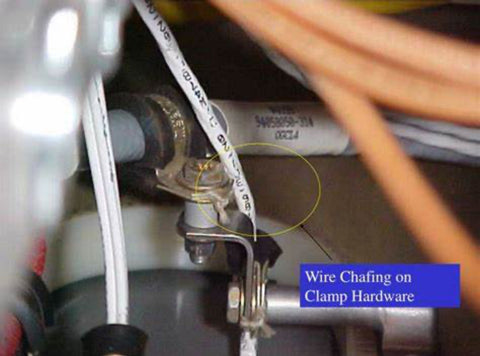
Yet amidst the chaos, Thomas remained a steadfast advocate for transparency and he used his newfound platform to champion a culture of vigilance and accountability, urging his peers to remain vigilant in the face of complacency.
Months passed, and the memory of the error began to fade, overshadowed by the relentless march of time. But just when it seemed that the incident would be relegated to history, fate intervened once again.
The day began like any other at the bustling maintenance hangar. Aircraft of various shapes and sizes dotted the ramp, undergoing routine inspections and maintenance checks. Amidst the organized chaos, new aircraft mechanic Jake found himself assigned to inspect an aircraft scheduled for a flight later that day.
Jake approached his tasks with a blend of precision and intuition. As he meticulously examined the intricate web of wires, pipes, and components within the aircraft's fuselage, he remembered the photo he had seen in his training. He instinctively looked towards the area shown in the photo and decided to take a closer look. Nestled amidst the labyrinth of cables, a solitary wire appeared frayed, its insulation worn down perilously close to a fuel line.
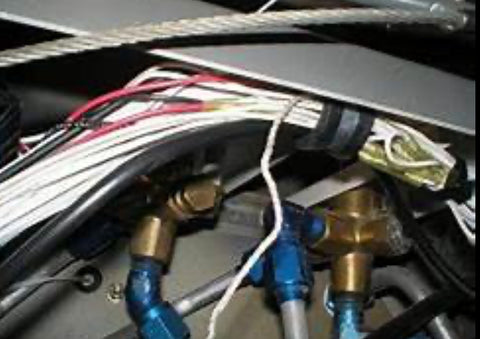
Instinctively recognizing the gravity of the situation, Jake's mind raced through the potential consequences of this overlooked hazard. A short circuit in such proximity to a fuel line could spell disaster, with the potential to ignite a catastrophic fire onboard. Aware of the stakes, Jake wasted no time in flagging down his supervisor to apprise him of the critical discovery.
Swiftly, the maintenance team sprang into action, mobilizing resources to address the imminent threat. With the aircraft grounded and passengers diverted to alternate flights, the focus shifted entirely to rectifying the issue at hand. While Jake meticulously maneuvered through the cramped confines of the aircraft's underbelly, his colleagues provided invaluable assistance, procuring the necessary tools and replacement components.
As Jake delicately navigated the intricate process of rerouting the compromised wire, a palpable sense of urgency permeated the air. With each precise movement of his hands, he worked methodically to isolate the potential point of failure, ensuring a robust and resilient solution.
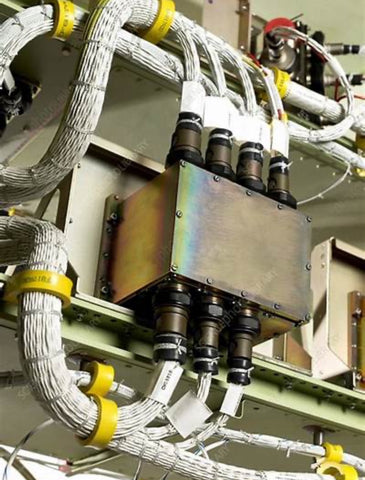
Finally, after hours of painstaking effort, Jake secured the newly rerouted wire, insulated from any potential contact with the fuel line. With a sense of relief washing over him, he conducted a series of rigorous tests to validate the integrity of the repaired system. As the diagnostic readings returned within the prescribed parameters, a collective sigh of relief echoed through the hangar, punctuated by a profound sense of gratitude for Jake's vigilance and expertise.
In the aftermath of the first incident, Thomas's picture became emblematic of a new era in aviation—a reminder that even the smallest oversight could have catastrophic consequences. It sparked a renewed commitment to safety, prompting airlines around the world to reevaluate their procedures and protocols.
As for Thomas, he remained humble and there was a quiet satisfaction—a knowledge that his decision to publish that single picture had made a positive impact.
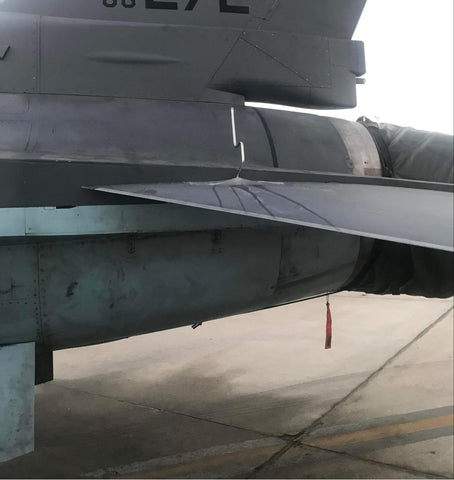
The Ethical Dilemma: Publishing Aircraft Maintenance Errors
Introduction
In an age where social media has become a powerful tool for sharing information and raising awareness, the discussion around the ethics of publishing pictures of errors made by aircraft mechanics has gained traction. On one hand, transparency and accountability are crucial for ensuring safety in aviation. On the other hand, publicly shaming individuals or organizations for mistakes can have serious consequences. In this extended blog post, we will delve deeper into the pros and cons of publishing such images, exploring the complexities surrounding this ethical dilemma and considering additional perspectives.
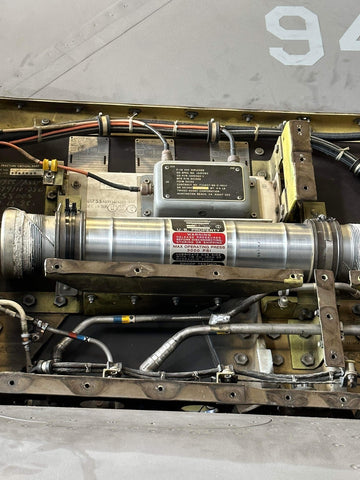
The Pros
Transparency and Accountability: One of the primary arguments in favor of publishing images of maintenance errors is the promotion of transparency and accountability within the aviation industry. By making such errors visible to the public, stakeholders can identify patterns, hold responsible parties accountable, and implement necessary corrective measures to prevent similar incidents in the future. Transparency fosters trust among passengers and regulators, ultimately enhancing safety standards.
Educational Value: Sharing pictures of maintenance errors can serve as valuable educational material for both industry professionals and the general public. By highlighting common mistakes and their potential consequences, these images can raise awareness about the importance of meticulous maintenance practices. Moreover, they can facilitate learning opportunities for aspiring aircraft mechanics, helping them understand the gravity of their responsibilities and the significance of adhering to rigorous safety protocols.
Pressure for Improvement: Public scrutiny resulting from the publication of maintenance errors can exert pressure on organizations, maintenance contractors, and regulatory bodies to prioritize safety initiatives and invest in training programs. The fear of reputational damage may incentivize organizations to allocate resources towards enhancing quality assurance processes and fostering a culture of safety. As a result, the overall safety culture within the aviation industry may be strengthened, leading to fewer errors and improved safety outcomes.
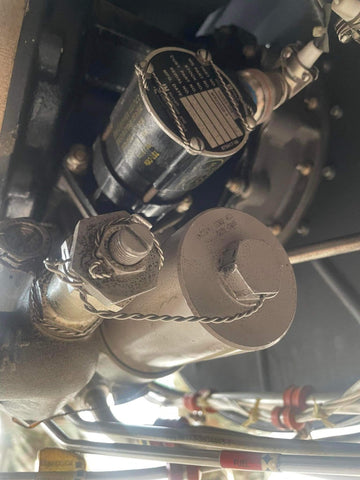
Incident Prevention: By shedding light on specific maintenance errors, publishing images can prompt proactive measures to prevent similar incidents from occurring in the future. Engineers and technicians may learn from past mistakes and implement additional checks, protocols, or technologies to mitigate risks and enhance the reliability of aircraft systems. In this way, the dissemination of information regarding maintenance errors can contribute to continuous improvement and the prevention of potential accidents.
Regulatory Compliance and Industry Standards: In many cases, regulatory agencies require airlines and maintenance organizations to report and investigate maintenance errors. Publishing images of such errors can aid in compliance with these requirements by providing visual evidence of incidents and their causes. Furthermore, sharing this information can facilitate collaboration among industry stakeholders in developing and maintaining best practices, thereby contributing to the overall safety and reliability of aircraft operations.
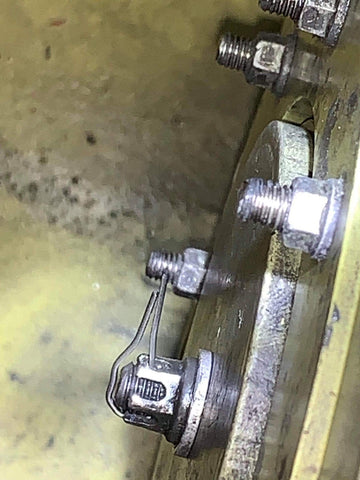
Enhanced Public Awareness: The publication of maintenance errors can raise public awareness about the complexities and challenges involved in aircraft maintenance. Many crew and passengers may not fully appreciate the meticulous work done by mechanics to ensure their safety. Seeing images of maintenance errors and understanding the consequences can help passengers develop a greater appreciation for the importance of rigorous maintenance procedures and the professionals who carry them out.
The Cons
Potential for Misinterpretation: Publishing images of maintenance errors without context or thorough explanation can lead to misinterpretation and the spread of misinformation. Viewers lacking expertise in aviation maintenance may jump to conclusions or exaggerate the severity of the depicted errors, resulting in unwarranted panic or damage to the reputation of individuals or organizations involved. Moreover, without proper investigation, the root causes of the errors may remain obscured, hindering efforts to implement effective corrective actions.

Negative Impact on Morale: Publicly exposing individuals responsible for maintenance errors can have detrimental effects on their morale and mental well-being. Being subjected to public scrutiny, ridicule, or even harassment can demotivate personnel and erode trust within the workforce. Fear of public humiliation may also discourage technicians from reporting errors or seeking help when faced with challenging maintenance tasks, thereby exacerbating safety risks rather than mitigating them.
Legal and Ethical Concerns: Publishing images of maintenance errors without consent may raise legal and ethical concerns regarding privacy rights, intellectual property, and professional integrity. Individuals depicted in such images may suffer reputational harm or face legal repercussions, especially if their identities are readily identifiable. Furthermore, sharing sensitive information about aircraft maintenance procedures, equipment, or proprietary technologies could compromise security and provide adversaries with valuable insights that could be exploited for malicious purposes.
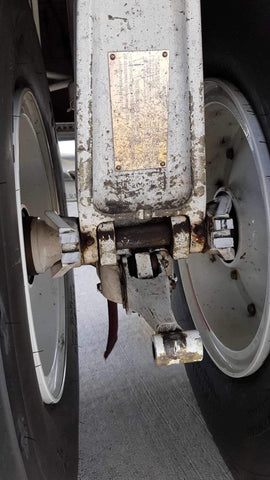
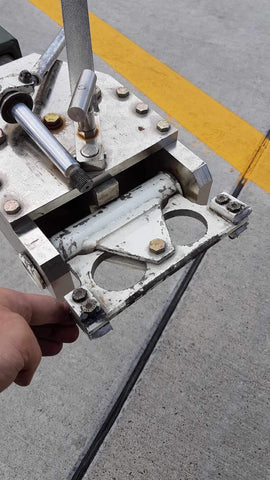
Counterproductive Effects on Safety Culture: While the intention behind publishing images of maintenance errors may be to promote safety awareness, the actual impact on safety culture could be counterproductive. Fostering a culture of blame and punishment may discourage open communication, collaboration, and the reporting of errors, as individuals fear the consequences of being publicly exposed for their mistakes. Instead of facilitating a constructive learning environment, public shaming may drive errors underground, hindering efforts to identify systemic issues and implement effective preventive measures.
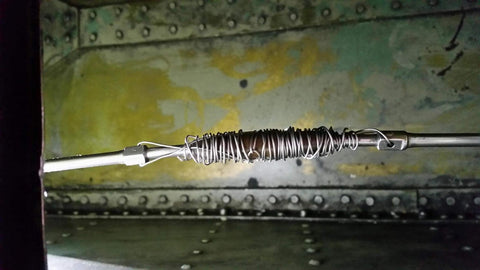
Unintended Consequences for Innovation: Fear of public scrutiny and backlash may stifle innovation within the aviation industry. If individuals and organizations are reluctant to share information about errors for fear of reputational damage, opportunities for learning and improvement may be missed. Moreover, the focus on avoiding public embarrassment may deter experimentation with new maintenance techniques or technologies that could ultimately enhance safety and efficiency in aircraft operations.
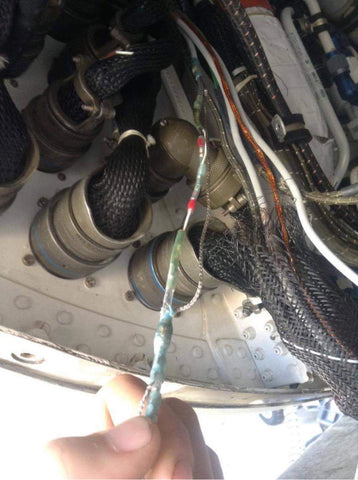
Impact on Organization or Industry Reputation: The publication of maintenance errors has the potential to tarnish the reputation of organizations, maintenance providers, and the aviation industry as a whole. Even if errors are promptly addressed and corrective actions taken, the negative publicity resulting from their public exposure may erode public trust and confidence in the safety of air travel. This could have long-term consequences for the industry, including decreased passenger demand, regulatory scrutiny, and financial repercussions.

Conclusion
The decision to publish pictures of errors made by aircraft mechanics is fraught with ethical considerations and practical implications. While transparency and accountability are essential for ensuring safety in aviation, the manner in which information is shared must be carefully managed to avoid unintended consequences. Balancing the need for public awareness with respect for privacy, professionalism, and the well-being of individuals involved requires a nuanced approach.
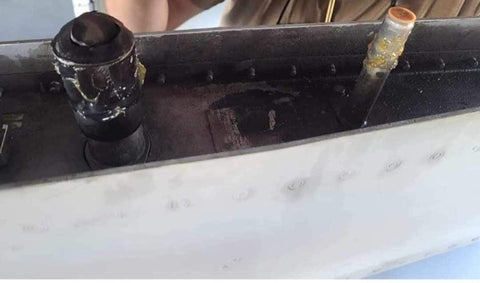
Ultimately, stakeholders in the aviation industry must strive to foster a culture of continuous improvement, where errors are viewed as opportunities for learning rather than occasions for blame. By encouraging open communication, investing in training and support mechanisms, and promoting collaboration among all stakeholders, the industry can collectively work towards enhancing safety standards and preserving public trust in air travel. While the debate over the ethics of publishing maintenance errors may persist, it is imperative that the broader goal of enhancing aviation safety remains paramount. As technology evolves and societal norms change, ongoing dialogue and ethical reflection will be essential in navigating the complex landscape of aviation maintenance practices.

About Challenge Coin Nation
We at Challenge Coin Nation are a veteran founded company and are honored to be able to continue serving our brothers and sisters in arms all over the world. We sell many different military themed items, but challenge coins are our specialty. Check out some of our items below. Oh, and you might ask, “How much is shipping?” That’s an easy question. Shipping is free – worldwide!
Shop for more coins at these pages:
Challenge Coin Nation Challenge Coins
Challenge Coin Nation Stock Challenge Coins
Challenge Coin Nation Custom Coins
Challenge Coin Nation Blue Falcon Military Coin
tg
Publishing aircraft maintenance errors is a complex and highly sensitive topic that carries significant implications for the aviation industry. The decision to publish such errors involves balancing transparency and accountability with the potential for reputational damage, operational challenges, and legal liabilities. This essay explores the pros and cons of publishing aircraft maintenance errors, considering the perspectives of various stakeholders, including airlines, maintenance organizations, regulatory bodies, and the public.
Introduction to Aircraft Maintenance Errors
Aircraft maintenance errors are any mistakes or oversights that occur during the maintenance, repair, or overhaul of an aircraft. These errors can range from minor issues, such as incorrect documentation, to severe mistakes that could compromise the safety of the aircraft. The aviation industry operates under stringent safety regulations, and maintenance errors are taken very seriously due to the potential consequences they can have on flight safety.
The Importance of Transparency in Aviation Safety
Pros of Publishing Aircraft Maintenance Errors
-
Enhancing Safety through Knowledge Sharing: One of the most significant advantages of publishing aircraft maintenance errors is the potential to enhance overall aviation safety. By sharing information about mistakes, the industry can learn from these incidents and implement changes to prevent similar errors in the future. This collaborative approach to safety allows maintenance organizations and airlines to improve their processes and reduce the likelihood of repeat mistakes.
-
Building Trust with the Public: Transparency is a critical factor in maintaining public trust in the aviation industry. When airlines and maintenance organizations are open about their mistakes, they demonstrate a commitment to accountability and safety. This can help reassure passengers that the industry is taking proactive steps to address potential risks and maintain the highest safety standards.
-
Facilitating Regulatory Oversight: Regulatory bodies such as the Federal Aviation Administration (FAA) or the European Union Aviation Safety Agency (EASA) rely on accurate and timely information to ensure compliance with safety regulations. Publishing maintenance errors can assist regulators in identifying trends, assessing the effectiveness of current regulations, and determining where additional oversight or guidance may be needed.
-
Encouraging a Culture of Safety: Publishing maintenance errors can foster a culture of safety within the aviation industry. When organizations are open about mistakes, it can encourage employees to report errors without fear of retribution. This can lead to earlier detection of issues, more comprehensive investigations, and a stronger emphasis on continuous improvement.
-
Contributing to Industry-wide Improvements: The publication of maintenance errors can have a ripple effect across the entire industry. Lessons learned from one organization's mistake can be shared widely, leading to industry-wide improvements. This can be particularly valuable in cases where a maintenance error is due to a systemic issue, such as a design flaw or inadequate training, that could potentially affect other operators.
-
Legal and Ethical Considerations: From an ethical standpoint, there is an argument that the public has a right to know about errors that could impact their safety. Transparency in this regard is seen as a moral obligation, ensuring that stakeholders are fully informed about potential risks and the steps being taken to mitigate them.
Cons of Publishing Aircraft Maintenance Errors
-
Reputational Damage: One of the most significant downsides of publishing maintenance errors is the potential for reputational damage. Airlines and maintenance organizations are highly sensitive to public perception, and the disclosure of errors could lead to negative publicity, loss of customer confidence, and a decline in business. Even minor errors, when made public, can be magnified by media coverage, leading to disproportionate negative effects.
-
Operational Disruptions: Publishing maintenance errors can also lead to operational disruptions. For example, if a maintenance error is disclosed, it could prompt regulatory bodies to ground aircraft or require additional inspections, leading to flight delays or cancellations. This can have significant financial implications for airlines and inconvenience passengers.
-
Legal Liabilities: The publication of maintenance errors can expose organizations to legal liabilities. Acknowledging mistakes publicly can be seen as an admission of guilt, which could be used against the organization in lawsuits. This is particularly concerning in cases where an error has led to an accident or incident. The fear of litigation can make organizations reluctant to publish errors, even if doing so could lead to safety improvements.
-
Confidentiality Concerns: There are also concerns about confidentiality when it comes to publishing maintenance errors. Maintenance organizations often work with proprietary information, and the disclosure of errors could inadvertently reveal sensitive data, such as trade secrets or details about aircraft design. This could have broader implications for the competitive landscape of the aviation industry.
-
Impact on Employee Morale: The publication of maintenance errors can have a negative impact on employee morale. Maintenance technicians and engineers may feel demoralized if their mistakes are made public, leading to a decrease in job satisfaction and productivity. This could also create a culture of fear, where employees are reluctant to report errors for fear of public shaming.
-
Risk of Misinterpretation: Another potential downside of publishing maintenance errors is the risk of misinterpretation. The general public may not have the technical expertise to fully understand the context of a maintenance error, leading to undue alarm or concern. For example, a minor error that poses little to no risk to flight safety could be perceived as a major issue by those outside the industry, leading to unnecessary panic.
Balancing Transparency and Confidentiality
Given the pros and cons of publishing aircraft maintenance errors, the aviation industry must strike a balance between transparency and confidentiality. One approach to achieving this balance is through the use of confidential reporting systems. These systems allow maintenance personnel to report errors without fear of retribution or public disclosure. The information gathered can then be analyzed and used to improve safety without compromising confidentiality.
Another approach is the publication of anonymized data. By removing identifying details, organizations can share information about maintenance errors in a way that protects the identities of those involved while still contributing to industry-wide safety improvements. This can help mitigate some of the risks associated with public disclosure, such as reputational damage or legal liabilities.
Case Studies and Real-world Examples
To better understand the impact of publishing aircraft maintenance errors, it is useful to examine real-world examples and case studies. Several incidents in aviation history have highlighted the importance of transparency in maintaining safety and public trust.
One such example is the Alaska Airlines Flight 261 accident in 2000. The crash, which resulted from a failure in the aircraft's horizontal stabilizer, was traced back to maintenance errors. The subsequent investigation revealed that the airline's maintenance procedures were inadequate, leading to changes in industry practices. The public disclosure of these errors played a crucial role in improving safety standards and preventing similar incidents in the future.
Another example is the Southwest Airlines Flight 1380 incident in 2018, where an engine failure led to the death of a passenger. The incident was linked to a maintenance error involving the inspection of fan blades. Southwest Airlines was transparent about the error, which led to an industry-wide review of engine inspection procedures. While the airline faced some negative publicity, the overall impact on safety was positive, as the incident prompted changes that likely prevented future accidents.
These examples illustrate the complex interplay between transparency, safety, and reputational risk. In both cases, the publication of maintenance errors led to significant safety improvements, but also exposed the airlines to public scrutiny and legal challenges.
The Role of Regulatory Bodies
Regulatory bodies play a crucial role in determining whether and how maintenance errors should be published. Agencies like the FAA and EASA are responsible for overseeing the safety of the aviation industry and have established guidelines for the reporting and publication of maintenance errors. These guidelines often include provisions for protecting sensitive information while ensuring that critical safety data is shared.
In some cases, regulatory bodies may require the publication of maintenance errors as part of their oversight duties. For example, the FAA's Aviation Safety Reporting System (ASRS) encourages voluntary reporting of safety issues, including maintenance errors, with the understanding that the information will be used to improve safety rather than for punitive purposes. The ASRS is an example of how regulatory bodies can promote transparency while balancing the need for confidentiality.
The Impact on the Future of Aviation
As the aviation industry continues to evolve, the publication of maintenance errors will likely remain a contentious issue. Advances in technology, such as the use of artificial intelligence and big data analytics, could provide new tools for detecting and analyzing maintenance errors. These technologies could make it easier to identify patterns and trends, leading to more effective prevention strategies.
However, the increasing complexity of modern aircraft also means that maintenance errors are becoming more difficult to detect and rectify. This could lead to a greater need for transparency in order to ensure that lessons learned from errors are widely disseminated and acted upon.
Moreover, the rise of social media and the 24-hour news cycle means that any publication of maintenance errors is likely to be rapidly and widely disseminated. This amplifies both the potential benefits and risks of transparency, making it even more important for the aviation industry to carefully consider how it handles the publication of maintenance errors.
The decision to publish aircraft maintenance errors is fraught with challenges, but it is also a critical component of ensuring the safety and integrity of the aviation industry. The pros of publishing such errors include enhanced safety, increased public trust, and the promotion of a culture of safety. However, these benefits must be weighed against the potential cons, including reputational damage, operational disruptions, legal liabilities, and the risk of misinterpretation.
Ultimately, the aviation industry must strike a balance between transparency and confidentiality, using tools such as confidential reporting systems and anonymized data to share important safety information while protecting the interests of all stakeholders. As technology and industry practices continue to evolve, so too will the approach to publishing maintenance errors, with the goal of maintaining the highest standards of safety and public trust.















Leave a comment